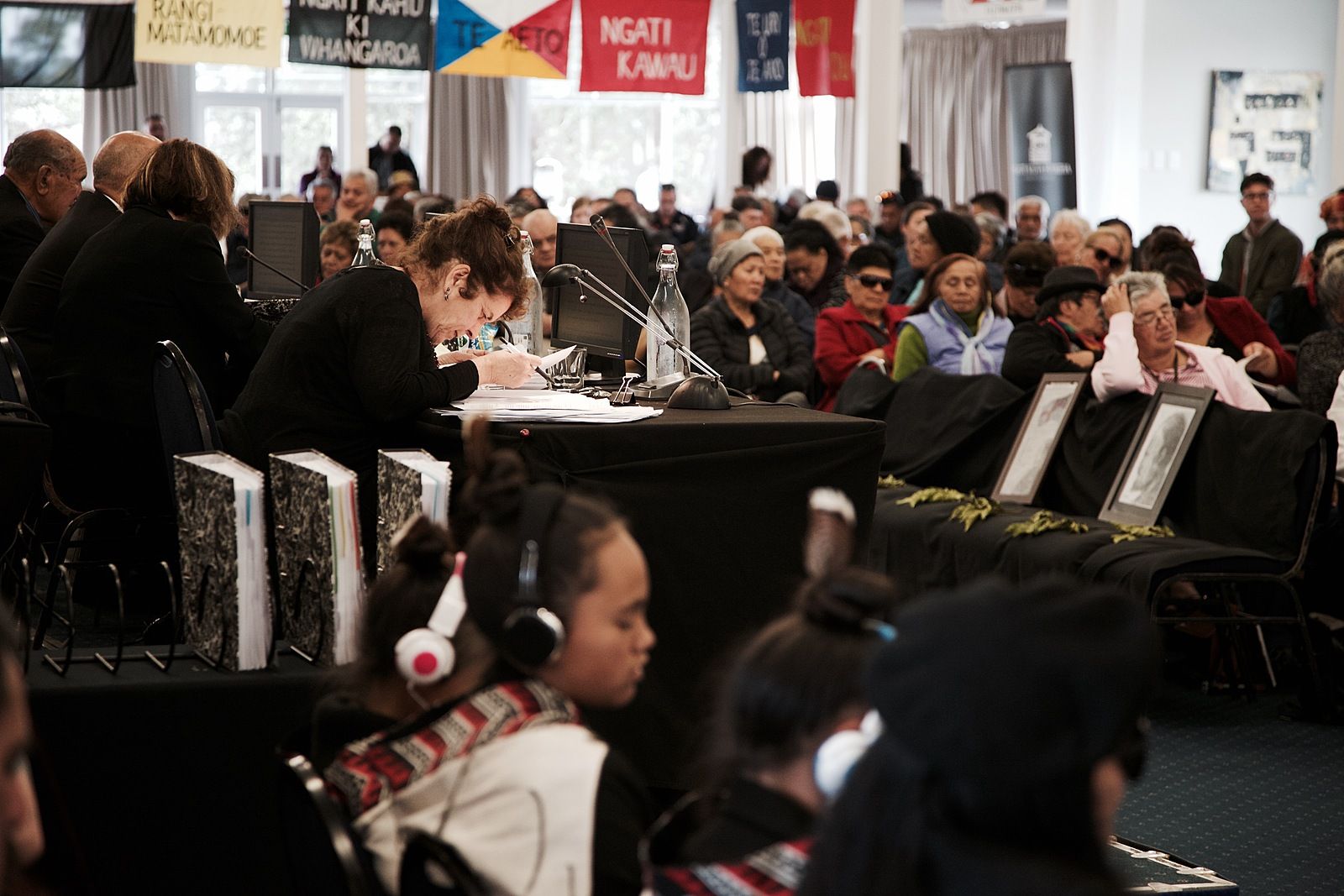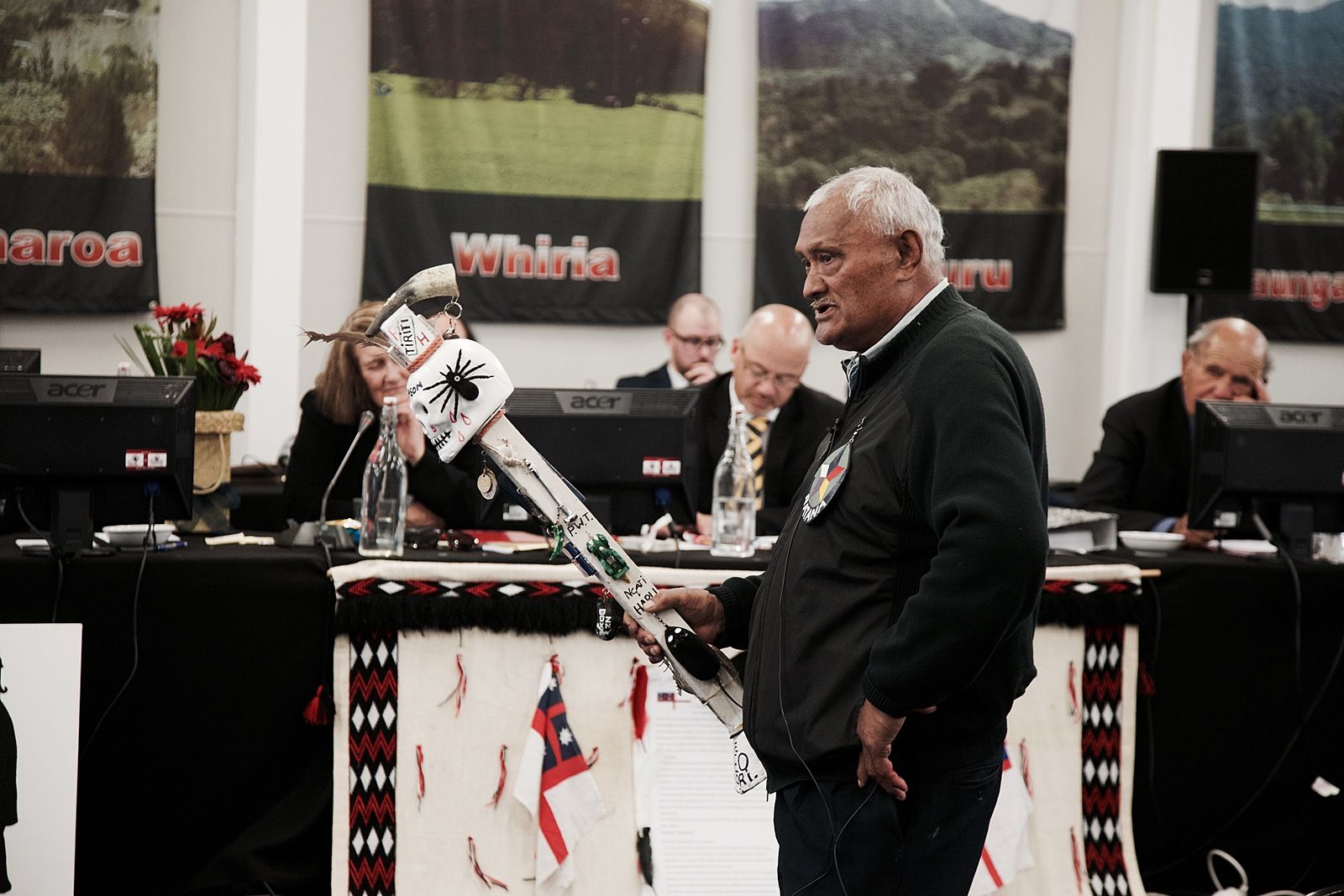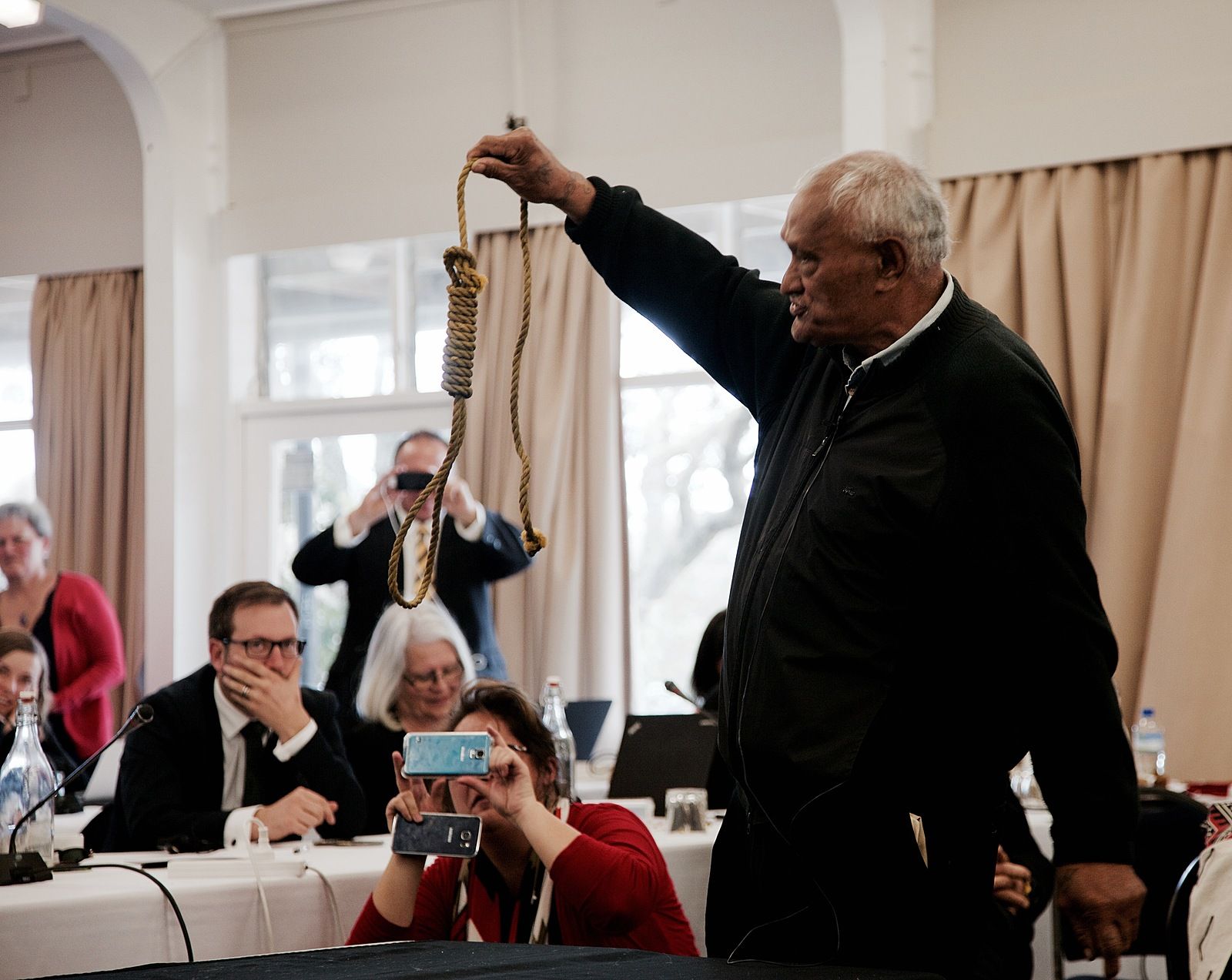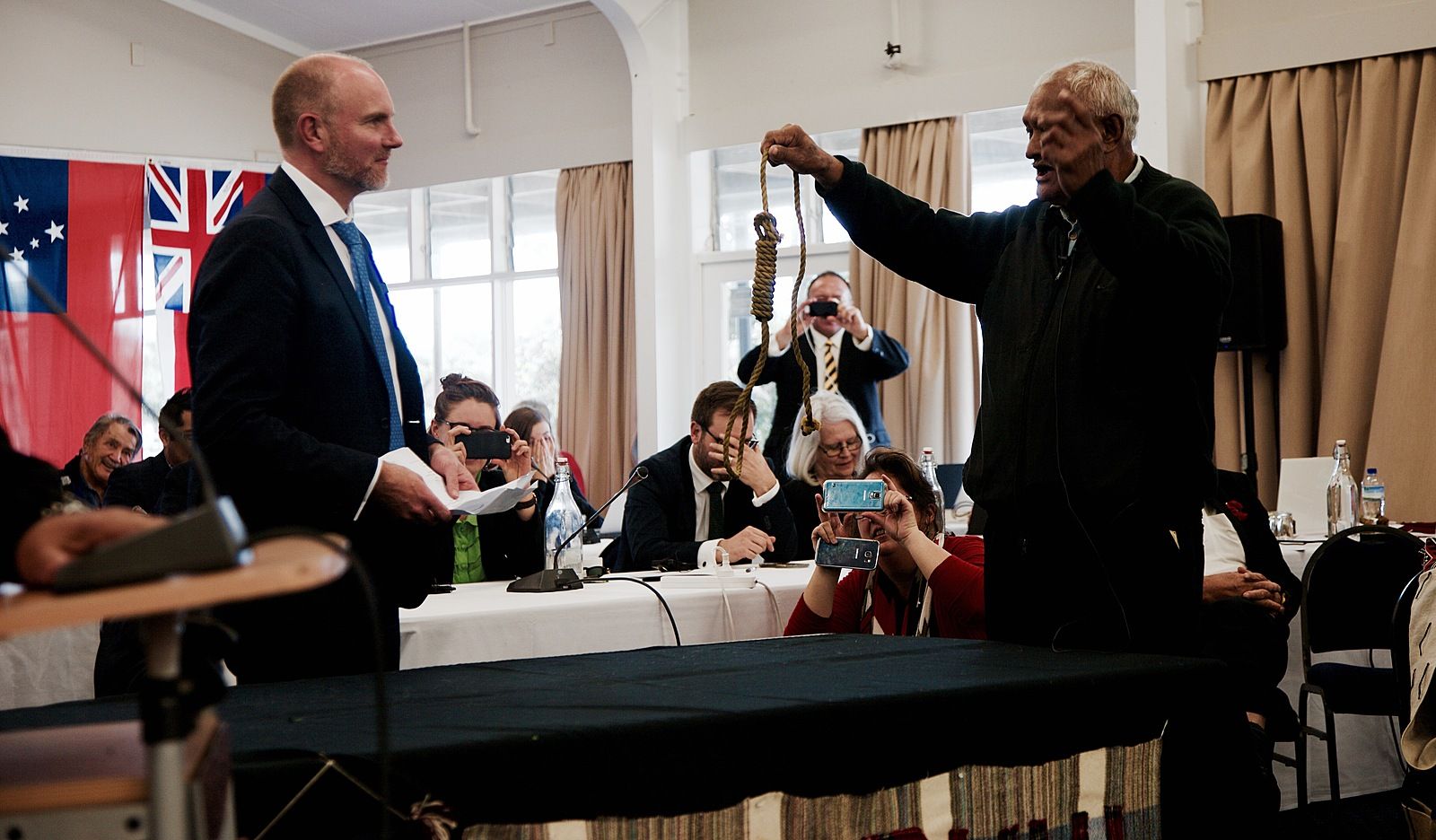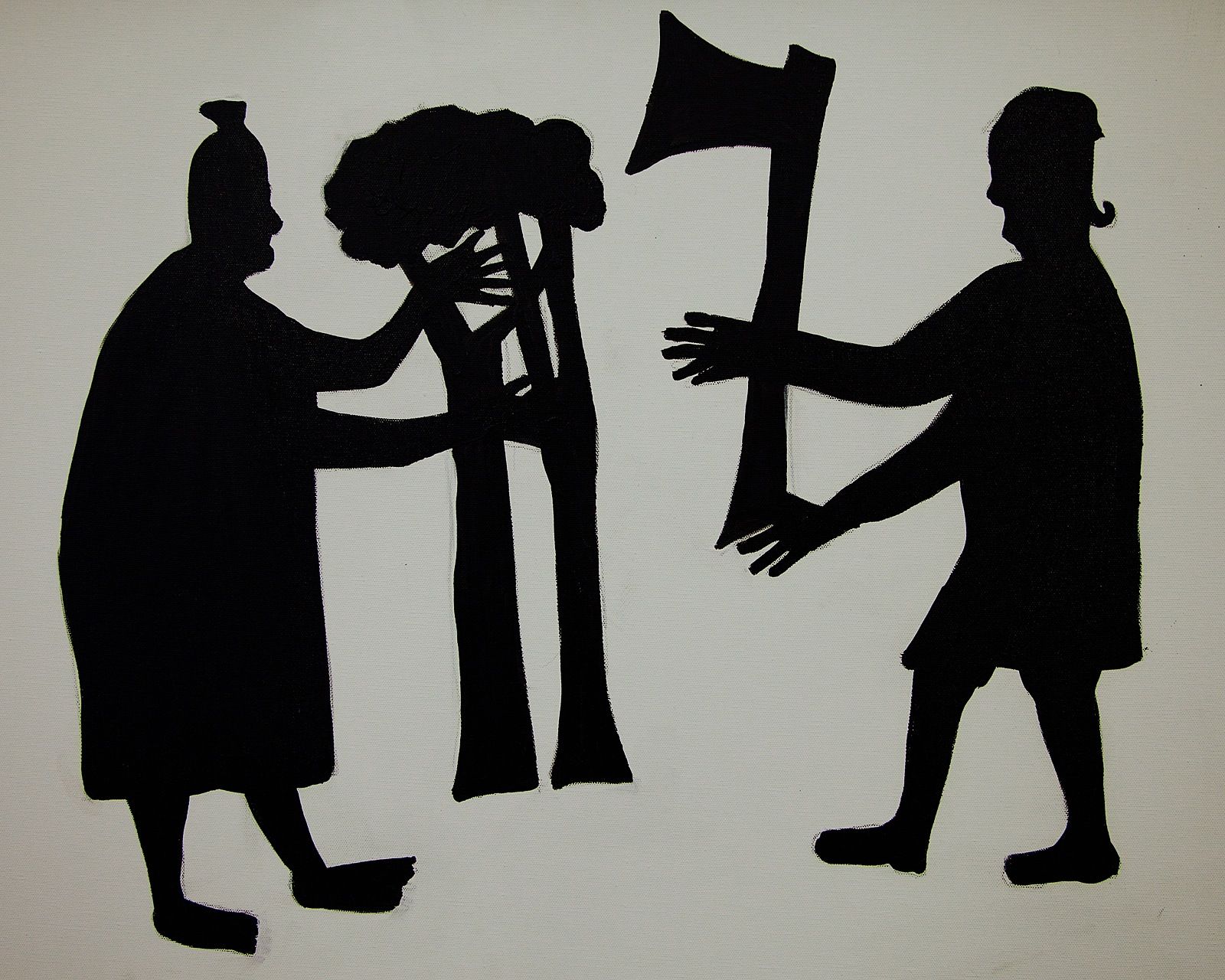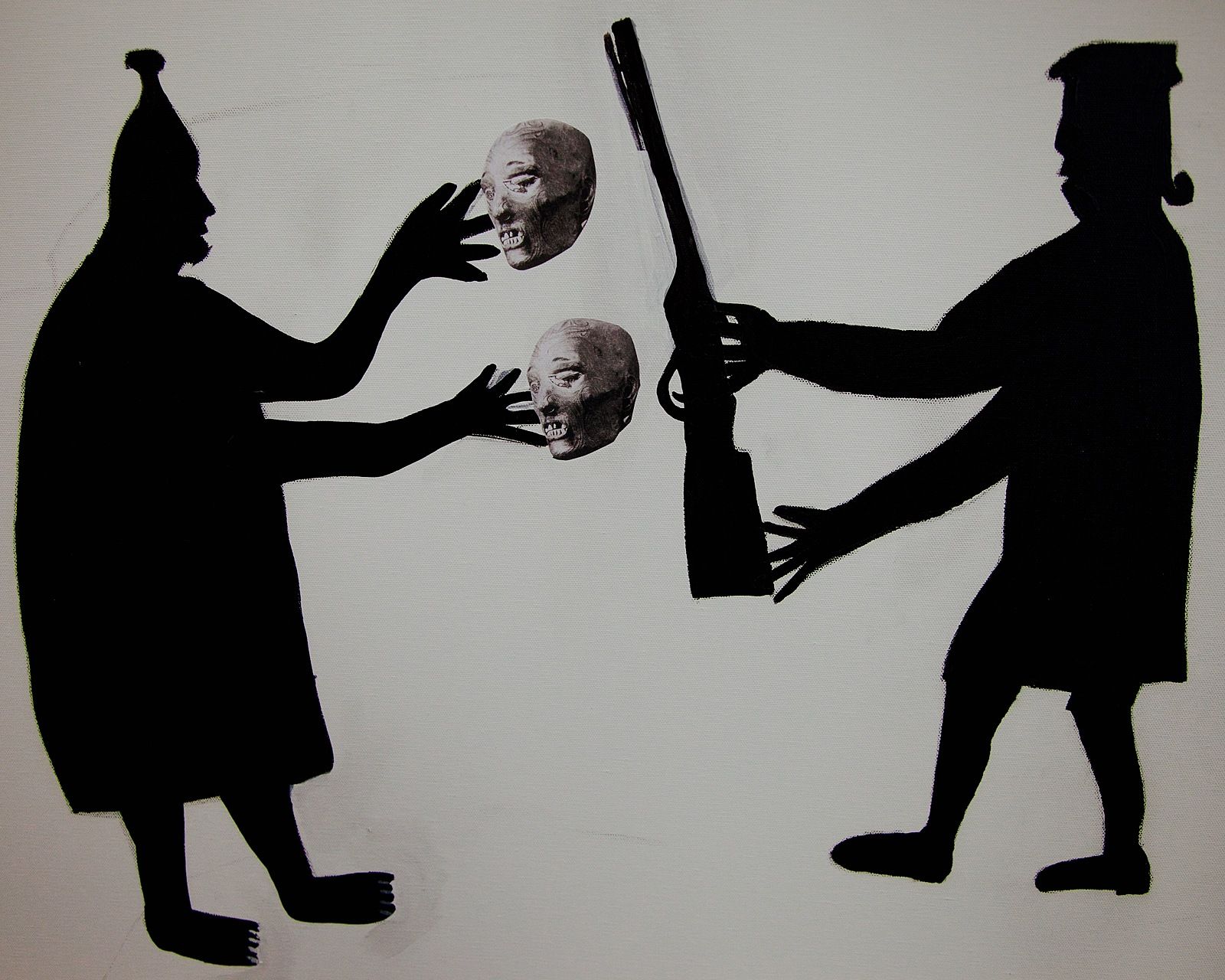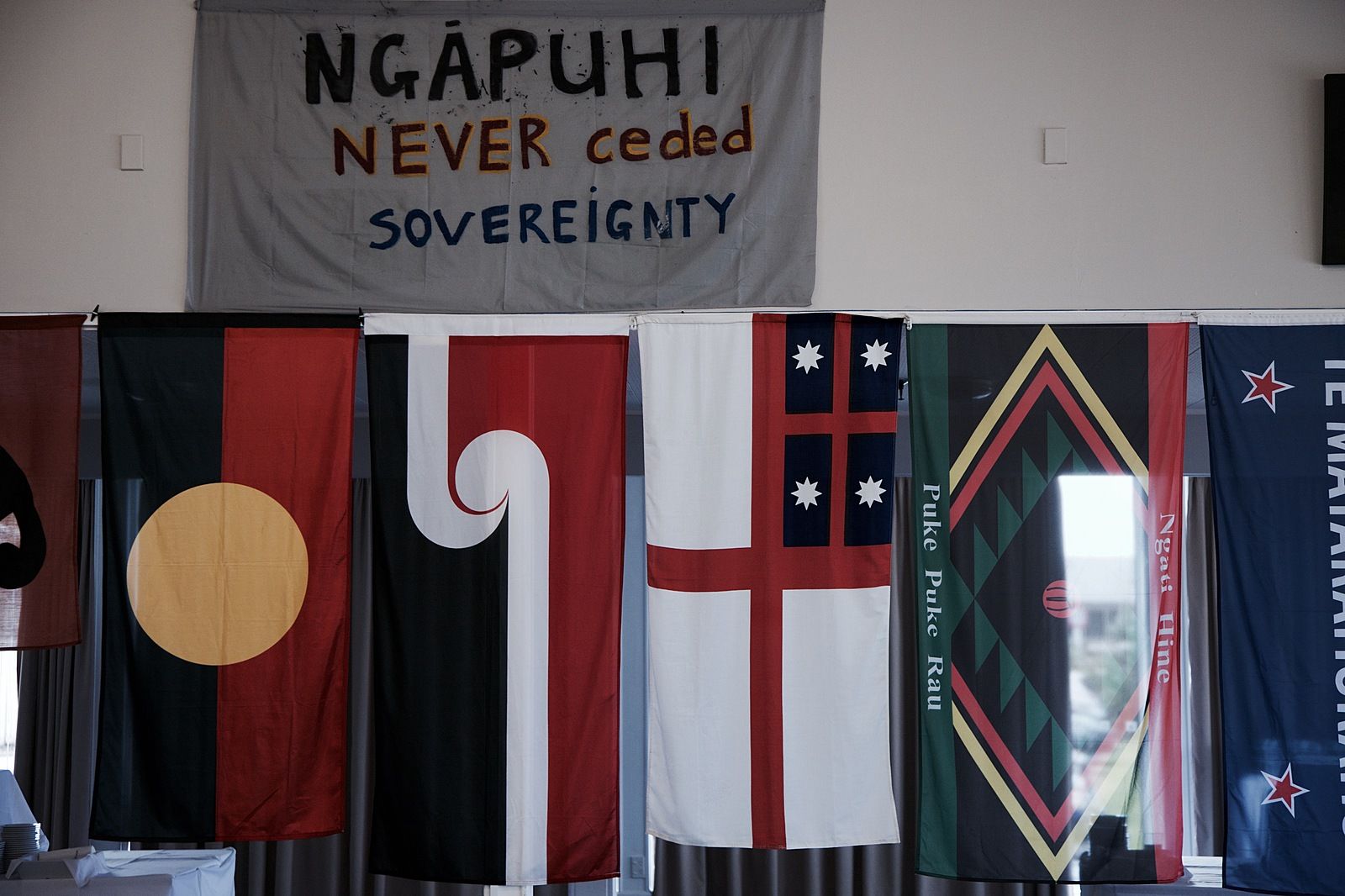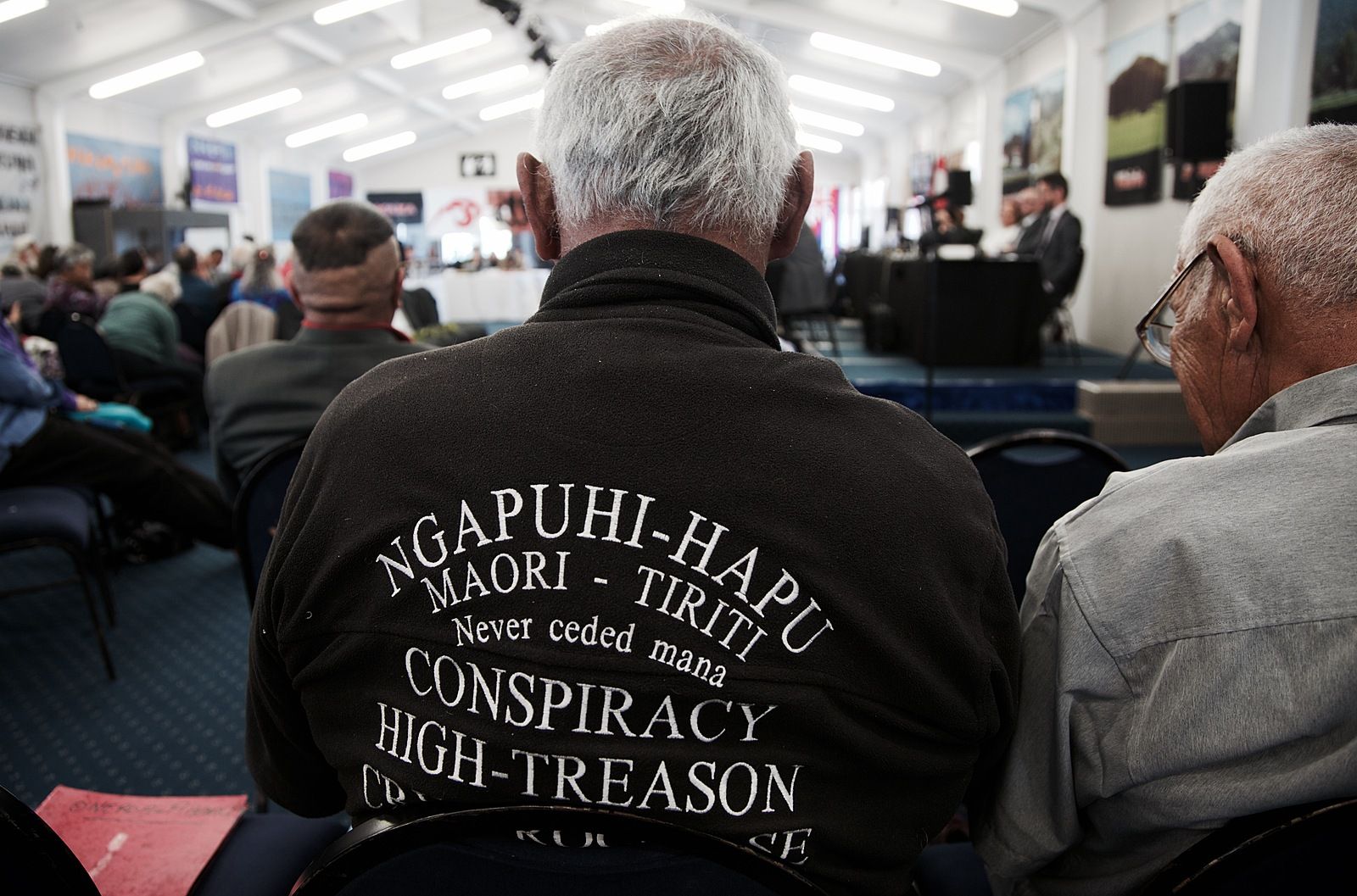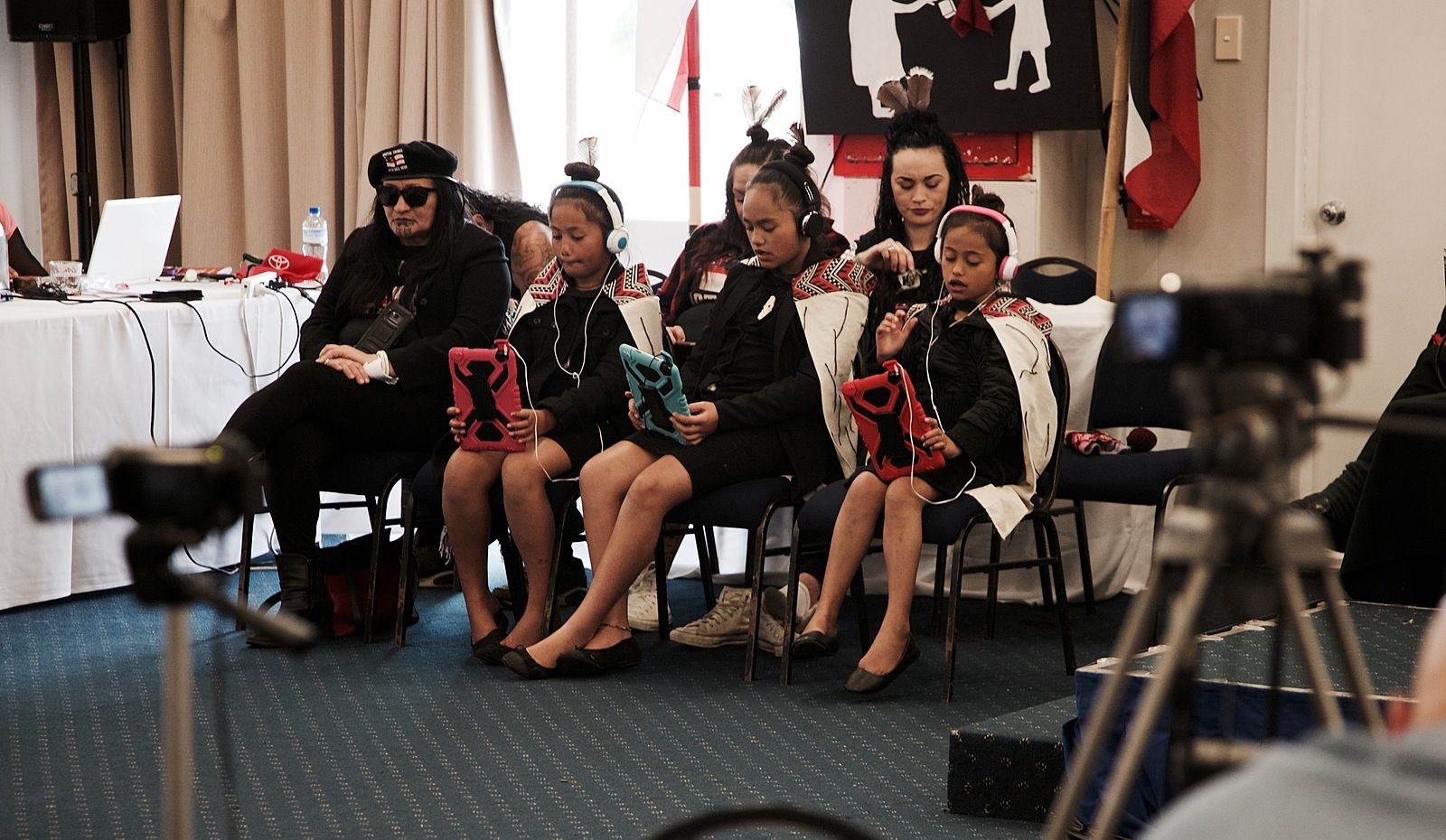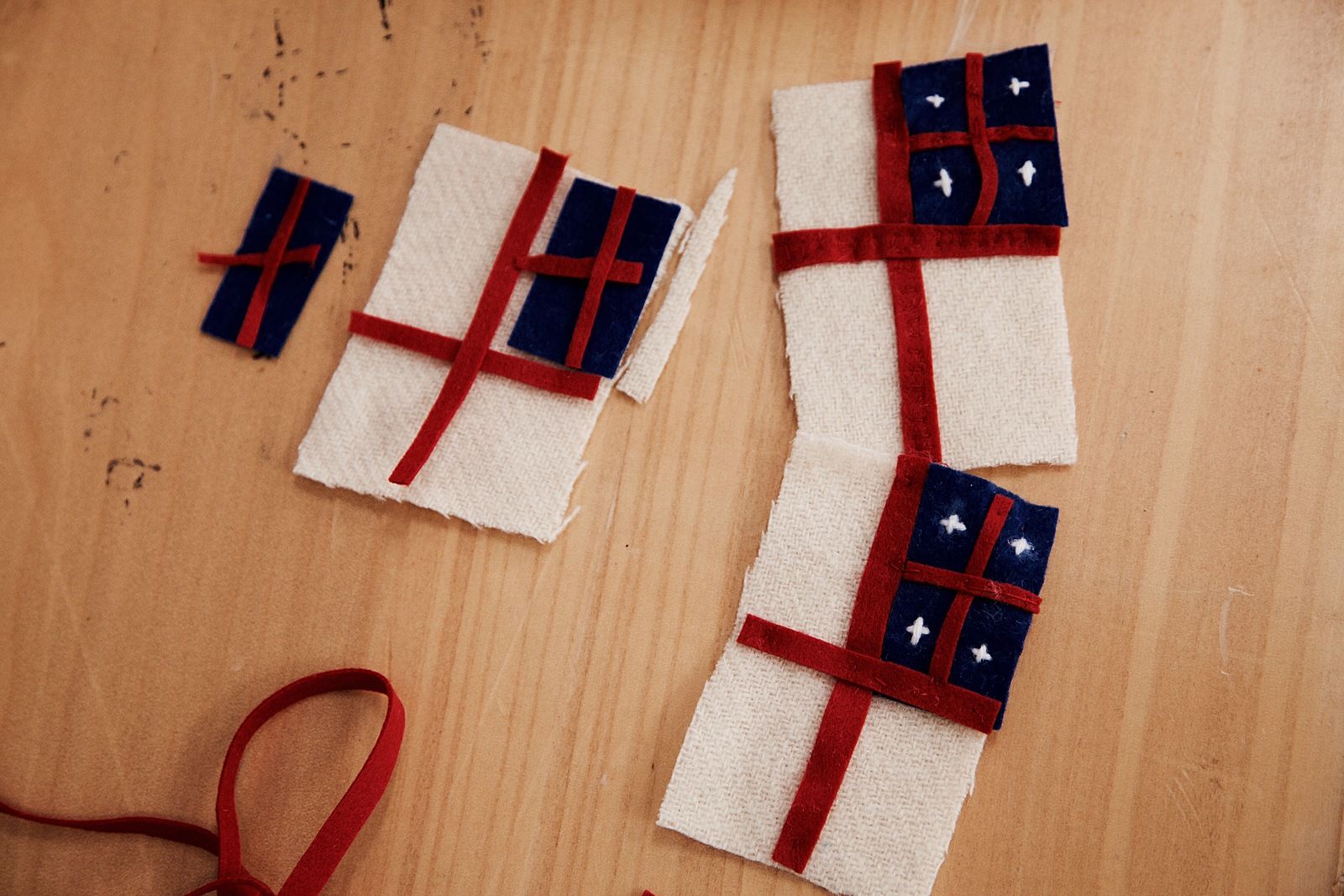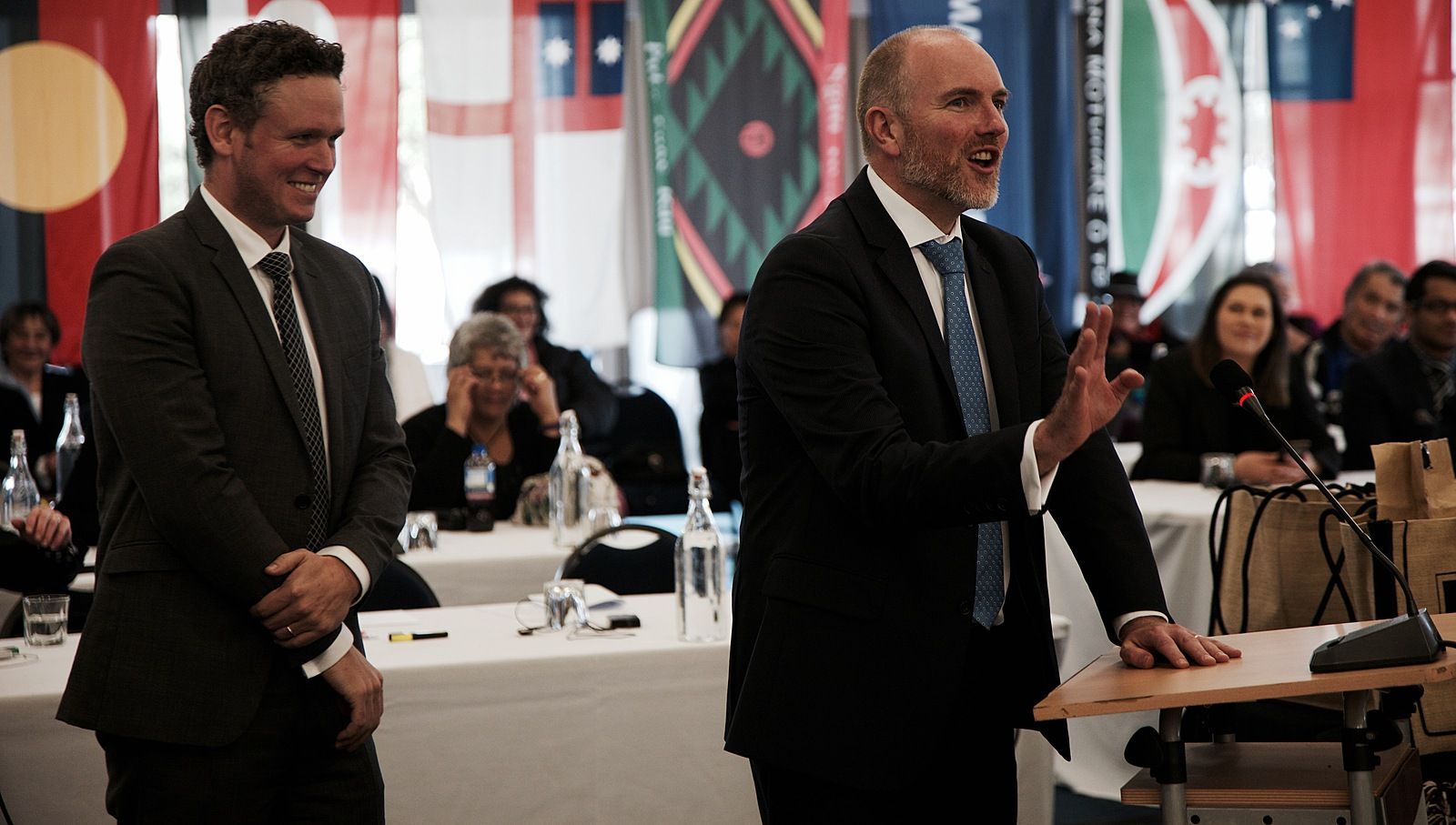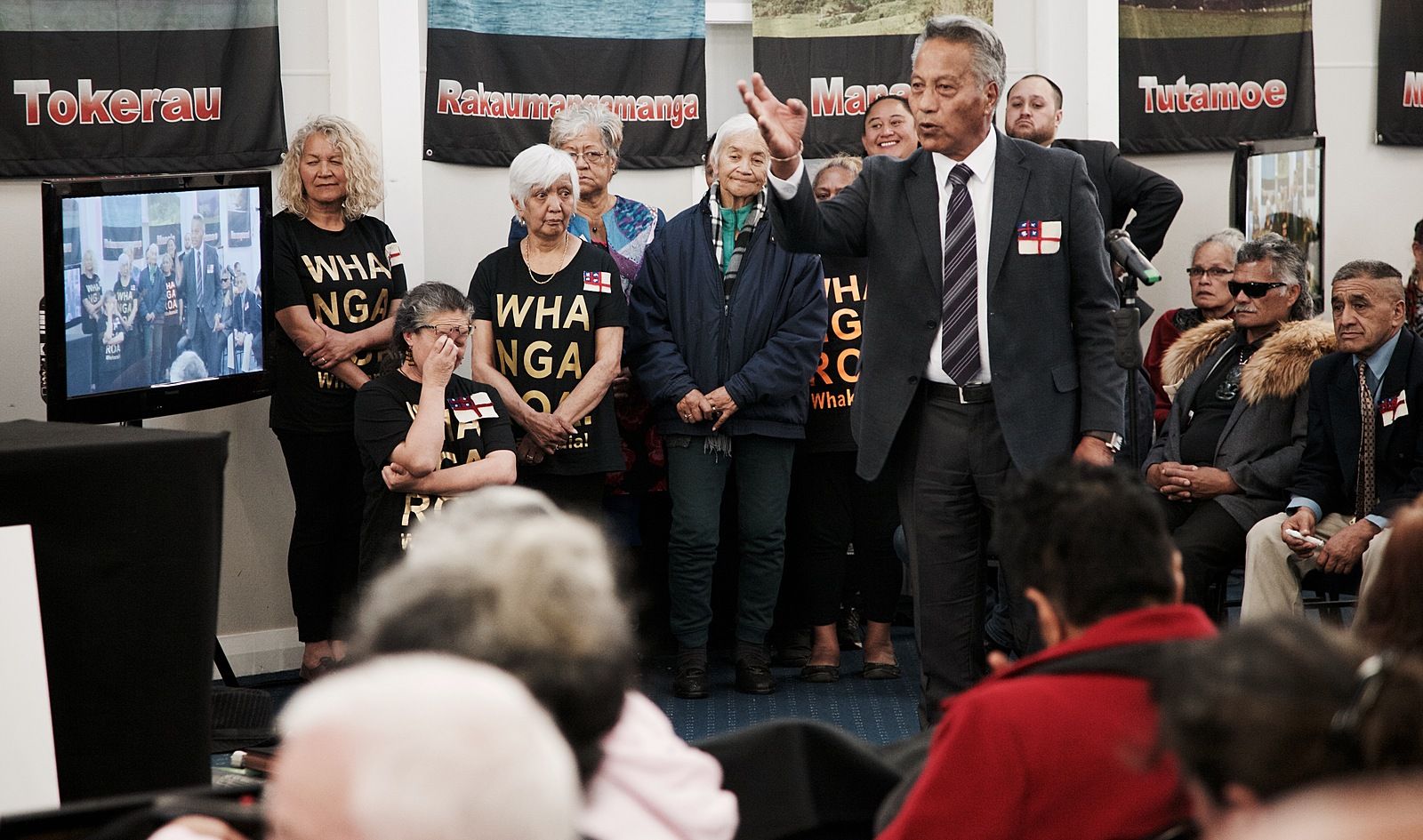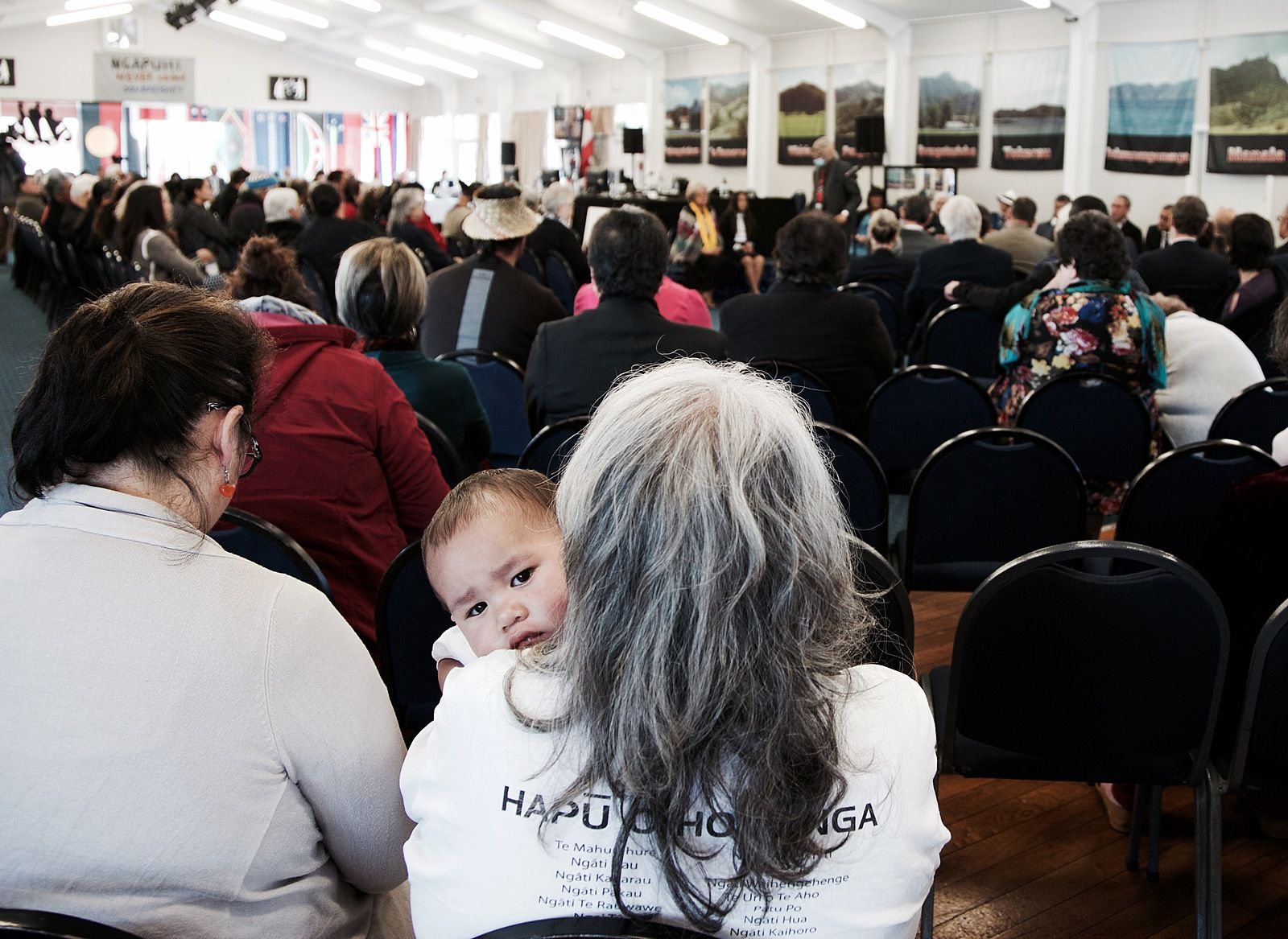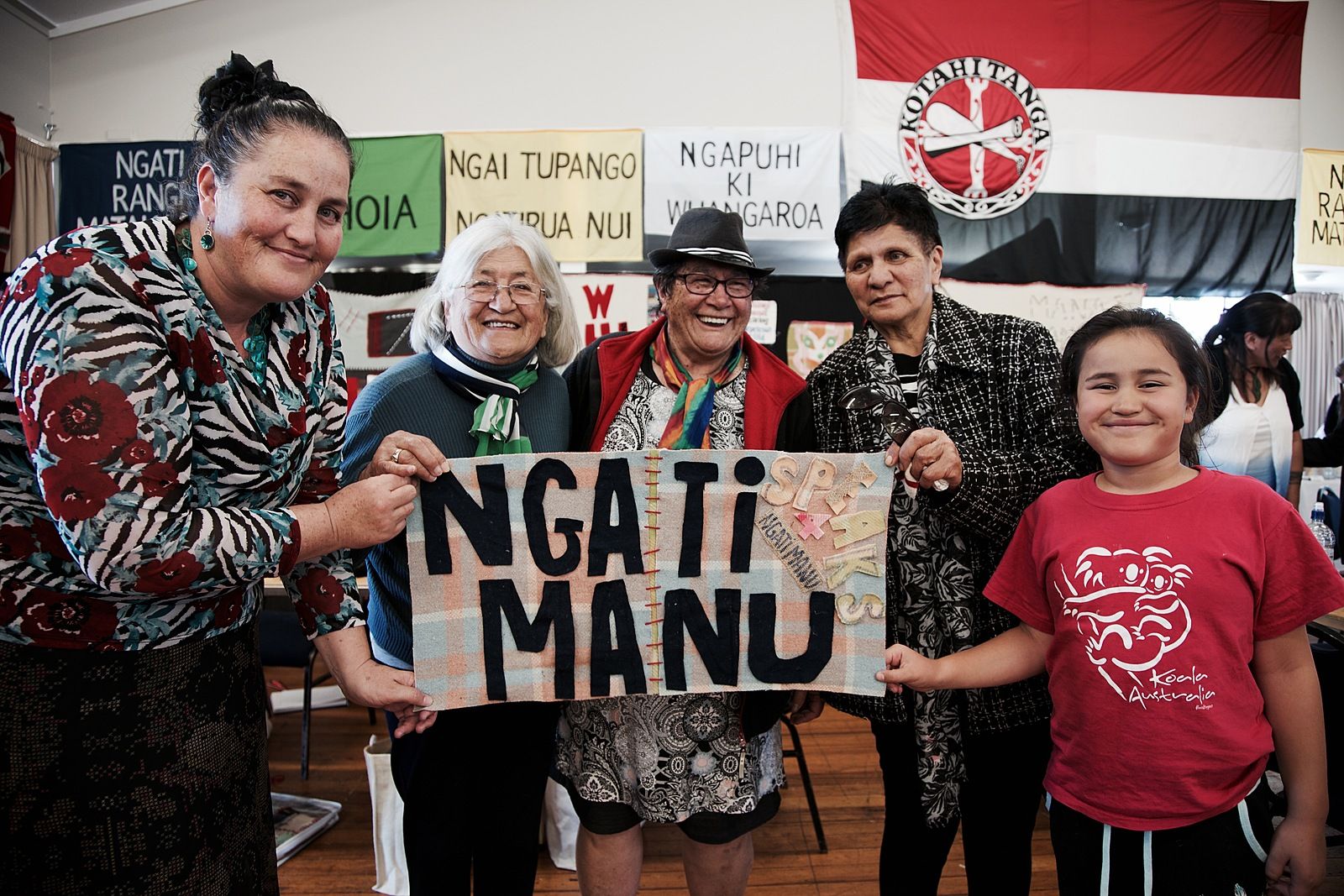Maranga Mai Ngāpuhi!
Recounting the Crown closings for stage two of WAI 1040, Sandy Wakefield (Ngāpuhi, Ngāi Tahu, Whakatōhea) provides a glimpse into the visceral and heated nature of the Treaty of Waitangi settlement process.
Recounting the Crown closings for stage two of WAI 1040, Sandy Wakefield (Ngāpuhi, Ngāi Tahu, Whakatōhea) provides a glimpse into the visceral and heated nature of the Treaty of Waitangi settlement process.
“O Governor! my land is gone, gone, all gone. The inheritances of my ancestors, fathers, relatives, all gone, stolen, gone with the missionaries. Yes, they have it all, all, all. That man there, the Busby, and that man there, the Williams, they have my land. The land on which we are now standing this day is mine. This land, even this under my feet, return it to me. O Governor! return me my lands. Say to Williams, ‘Return to Te Kēmara his land.’ Thou” (pointing and running up to the Rev. H. Williams), “thou, thou, thou bald-headed man – thou hast got my lands. O Governor!...”
Te Kēmara, Ngāpuhi rangatira, 5th February 1840, Waitangi.
20 October 2017 at Waitangi was a significant milestone in the, thus far, eight-year Treaty of Waitangi settlement process for Ngāpuhi. This was the week-long hearing of the Crown closings for stage two, WAI 1040, Te Paparahi o Te Raki.
Whānau representatives arrived, carrying framed photos of original claimants that are either unfit to attend or have now passed.
In front of the Crown stand, a large copy of the Treaty of Waitangi lay on the floor for the Crown to read. In the middle of the room, a large sign ‘Ngāpuhi did not cede their sovereignty’ hung for everyone to read. The Waitangi function room was transformed into a vivid display of flags, artwork and messages of protest against the Crown.
Attendees settled in for the week, moving the furniture around to face large screens with live pictures of the hearings, as headsets are handed out for te reo translations. At the back of the room, an unmistakable tokotoko is placed high up on a table to bear witness to the final week of Crown closings. Like the inquiry, it too is eight years old and is adorned with trinkets collected by its owner who finished the week by gifting the Crown representative a rope noose during his mihi whakamutunga.
The hot-blooded, politically-vocal warriors who speak at every hui under the sun and staunchly represent their hapū have been on the front line for eight years. It is a herculean task that requires steady reinforcements to endure what seems a relentless struggle without end.
Over the eight year journey a rotating support network of whānau, hapū, lawyers, Taiwhenua administration (funded by the Crown Forestry Rental Trust), and hapū coalition Te Kotahitanga o Ngā Hapū Ngāpuhi together have built a solid web of organised chaos. Through these channels, a large amount of time and effort has been spent debating the mandate issue.
In 2014, the Crown officially recognised the Tūhoronuku Iwi Mandate Authority (IMA) as having secured support from the people of Ngāpuhi to enter settlement negotiations on behalf of the iwi. Hapū alliance group, Te Kotahitanga o Ngā Hapū Ngāpuhi, opposed the Tūhoronuku mandate alleging that the Crown had pre-determined its decision. They did not support the Tūhoronuku IMA and argued that it undermined the rangatiratanga of their hapū.
Hapū autonomy is a defining characteristic of Ngāpuhi
Hapū autonomy is a defining characteristic of Ngāpuhi, there are over 100 hapū that form this iwi, and this resulted in the Waitangi Tribunal calling Tūhoronuku “unfit to settle” on behalf of the iwi and strongly advised a new approach and structure of the mandate.
Despite initial rejection of the Waitangi Tribunal's Stage One report that deemed Ngāpuhi rangatira not to have ceded their sovereignty by signing Te Tiriti, the government of the day brought the two opposing groups, Tūhoronuku and Te Kotahitanga, together to redesign the mandate. This led to the creation of the Maranga Mai Report.
The Maranga Mai Report outlined processes to enhance hapū participation and representation at every level of the settlement negotiations. The enhanced structure aimed to ensure that Ngāpuhi hapū are the decision-makers and drivers throughout the settlement process.
An event occurred in 2016 that did not help with the building tension. Tūhoronuku chairman Sonny Tau was stood down after being caught by Department of Conservation staff with five dead kererū. Mr Tau was found guilty of shooting the protected birds and attempting to pervert the course of justice as he told the police a falsified story. Negotiations repeatedly broke down eventuating in a s stalemate with the former government walking away from the table a month before the 2017 general election.
Te Paparahi o Te Raki is the biggest inquiry ever put to the Waitangi Tribunal. While yet to be negotiated, the settlement package seeks to provide redress to the significant breaches of Te Tiriti within Ngāpuhi which includes massive loss of land, culture and taonga. On the lips of all hapū kaikōrero however is: when will the Crown provide redress to the loss of sovereignty?
When will the Crown provide redress to the loss of sovereignty?
In Ngāpuhi, the largest iwi in Aotearoa, hapū have hosted thirty-one hearings over seven years, covered four hundred claims over five districts, and as a result, the Tribunal will produce two reports - representing the two stages. In Stage One of the process, the Tribunal tested evidence on our nation’s founding documents: He Whakaputanga and Te Tiriti o Waitangi.
The Tribunal concluded that in February 1840 the Ngāpuhi rangatira who signed Te Tiriti did not cede their sovereignty. That is, they did not cede their authority to make and enforce law over their people or their territories. Rather, they agreed to share power and authority with Governor Hobson. The rangatira agreed to a relationship, one in which they and Hobson were to be equal - an equality that acknowledged their separate roles and different spheres of influence. In essence, rangatira retained authority over their hapū and territories, while Hobson maintained the authority to control Pākehā.
A number of New Zealand’s leading Treaty scholars – Māori and Pākehā – have expressed similar views. In this sense, the report represents a continuity of the known.
For something so essential like the founding documents of our nation, this inquiry is an incredible insight and journey into the history that we, as a country, are unsophisticated at acknowledging. Even the Crown becomes tight-lipped when under cross-examination by the Tribunal.
"…that simply is the situation under the Treaty of Waitangi Act 1975, there is no requirement that the Crown responds to any Tribunal report."
Crown Lawyer Mr Andrew Irwin.
The conclusion that Ngāpuhi did not cede sovereignty in February 1840 is no news to the claimants. There is a long history of their tūpuna protesting the Crown’s interpretation of the Treaty: Te Kēmara’s kōrero the night before he signed the Treaty, the felling of the flagstaff at Kororāreka by Hone Heke, and the start of the Northern Wars are some of the many examples of evidence the Tribunal has heard from the claimants.
In giving their evidence many include that they will not accept full and final settlement with some claimants even wishing to take the Crown all the way to the Supreme courts.
Ngāpuhi doesn’t have a formal position on redress yet, but Mr Irwin argued that Tūhoe and Whanganui didn’t sign the Treaty and therefore did not cede their sovereignty either but settlement with those two groups was still reached.
Most disconcerting for Māori has always been the amount of control the Crown has had over the settlement process.
The Crown warned the Tribunal that if Ngāpuhi is treated different to other iwi who claim to not have ceded their sovereignty, it will demonstrate the inconsistencies and weakness in the Tribunal practice. The Tribunal then listened to support and encouragement from Ngāpuhi to remain brave and courageous with their writing of the Stage Two report.
“... I don’t think I knew what staunch really meant.. A staunch that has come through one hundred and seventy years of often painful history....”
Dr. Ann Parsonson, Waitangi Tribunal Member.
In Stage Two, the Tribunal considered events after February 1840 that included a myriad of issues such as tino rangatiratanga, kāwanatanga, the Northern War 1844-46, the Native Land Court 1865-1900, Māori land alienation, takutai moana, te reo Māori, wāhi tapu, tikanga and Taiwhenua-specific issues.
Spearheaded by Whangaroa hapū, blankets and patchwork were delicately crafted during the 3 weeks of hearings. This was a way to collectively keep hands busy while listening to the Crown bleat on with examples of how well the government fostered te reo in native schools in the 1850s. Hand-stitched blankets with detailed patches of whakataukī, land confiscation dates and the He Whakaputanga flag were gifted to the Crown, showing them that Ngāpuhi are ready to trade back.
Presiding Officer, Judge Craig Coxhead reflected on the thirty one weeks of hearings with some good humour. Although hōha for him, he mused that the constant booing, groaning, clapping, seething and laughter from the attendees during hearings was the Ngāpuhi way of letting the Tribunal and the Crown know that they were all listening, and held on to every word.
He then asked if anyone remembered the Crown witness from the Ministry of Education who, when asked "When was the Treaty of Waitangi signed?" replied, "1847". The room roared with laughter with that one.
Crown representative Andrew Irwin bore most of the brunt of the noisy attendees, the rope noose gifts and the selfie snaps with claimants. Yet he was looked after by the hapū for a redeeming feature: he made claimants think twice about what language to present evidence in.
He is the first Crown representative fluent in te reo Māori and presented evidence in both languages.
“There is no question that the Crown has sovereignty in New Zealand today. This report doesn't change that fact.”
Former Treaty of Waitangi Negotiations Minister Chris Finlayson.
The Treaty settlement itself is a miniscule redress for all the wrongdoings of the Crown. But the Māori renaissance is building momentum and society demand the Crown begins honouring the Treaty today.
If Ngāpuhi can convince the Tribunal we are metaphorically on the same playing field, and that reinstating hapū rangatiratanga and mana motuhake on a co-governance level is the solution, the struggle without end has all been worth it.
There are brilliant ideas floating around that show that Aotearoa can lead the way with kaupapa Māori-led initiatives, for example mātauranga Māori research providing solutions to ecological problems such as Kauri dieback, the Whanganui awa and Te Urewera being given legal personhood.
While some predict the next stage of negotiation could take up to 10 years, post settlement Aotearoa is already upon us. The recommendations brought by the Waitangi Tribunal since its founding in 1975 have delivered the wero to provide justice for historic breaches of Te Tiriti, and much progress has been made.
Treaty settlements have been signed to a total sum of 3% of the land losses suffered by tāngata whenua, in packages neatly providing redress to the wide-ranging impacts of colonialism. Yet, Maori are still over represented in jails, suicide and poverty statistics and it is clear there is still a long way to go before we truly reconcile our colonial past.
The challenge for Ngāpuhi now lies in transferring the Tribunal's recognition of their hapū rangatiratanga from 1840 into a current day Aotearoa where their mana motuhake can be entrenched and protected, just as signatories to Te Tiriti, such as Te Kēmara, intended.

